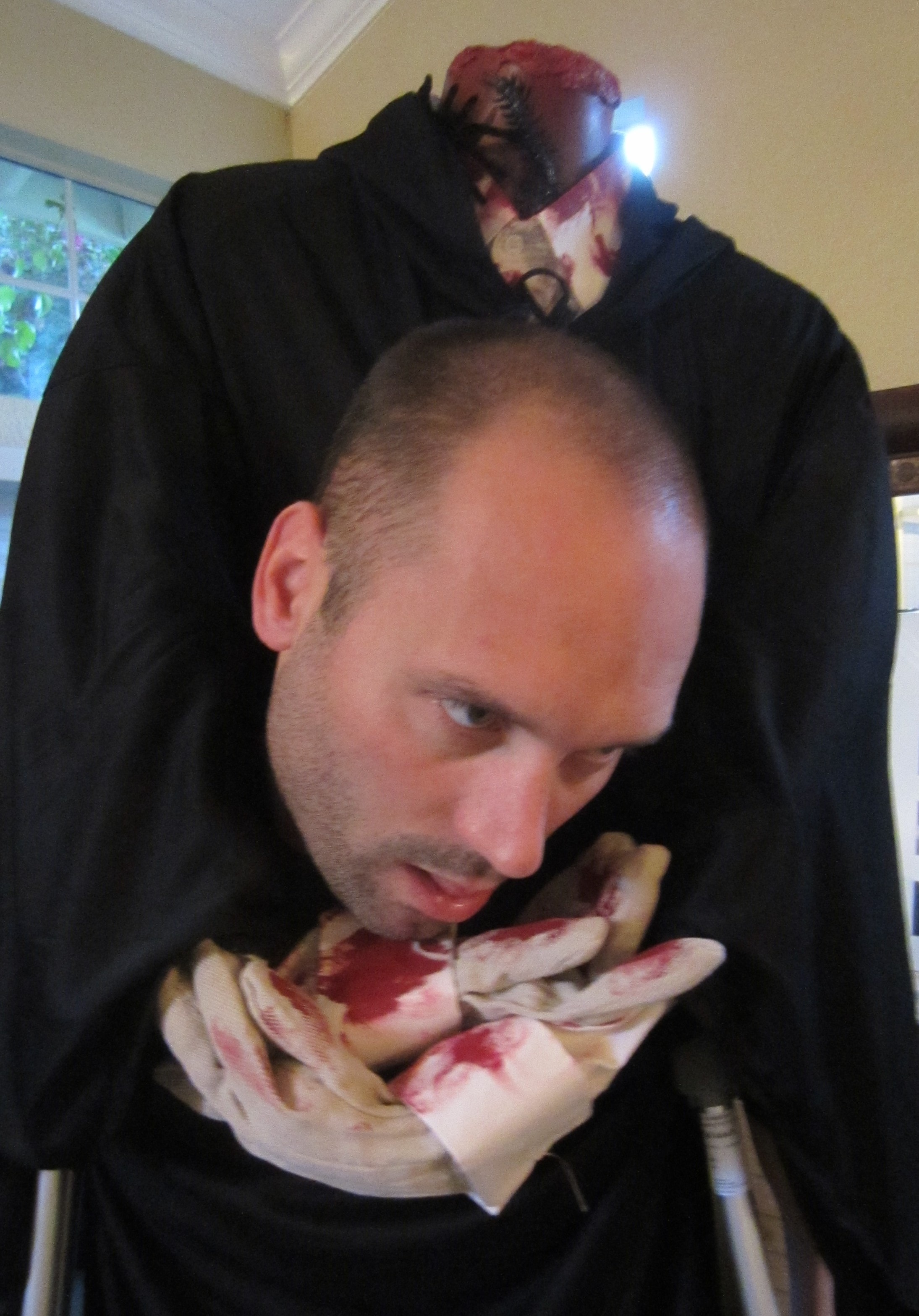Headless men
Acephale (also Blem Mier ) are a headless folk fable, which occurs since antiquity in literature and art and in the Middle Ages became very popular. It turned out such a monstrous human races (also fabulous races, lat monstra ) at the edges of the known world, especially in India and Africa, before.
Appearance
Acephale have a human form, but they are headless and wear her face on the chest, or on the shoulders. Besides hairless Acephalen including those described with fur and displayed. This presentation comes on, especially in the late Middle Ages. By fur the Acephalen closely into the wild men who were also often depicted in late medieval times. Also held Acephale come, although very rare,. Frequently Acephale are armed, they wear such as a stick, a spear or sword and shield. In the church art is not always clear whether it is a Acephalen. Besides the actual Headless there are mythical creatures that are often categorized as Blem Mier, but would actually be called cephalopods.
Name
Acephale are mentioned in many texts, but often simply described without specifying a name. If they are called, various terms are used. Pliny the Elder mentioned Headless in two places. In Book V of his Naturalis historia he calls headless Blemmyas and in Book VII, a people whom he referred to as oculos in umeris. In addition, the designation comes before epiphagi. A distinction between different individual peoples is possible, but difficult on the basis of description and representation of practice and little sense. The term Acephale can be used as an umbrella term. In the secondary literature they are also referred to as Blem Mier ( Blemmyes, Blemnier etc.).
Culture
Little is known about culture and characteristics of the acephalous. Evagrius Scholasticus mentioned that the people of the blemmyae had attacked between the middle of the 3rd and 5th century Christian settlements in North Africa. That fits with the presentation as a warlike people.
Connection to reality
It is believed that the idea of the headless warriors is attributed to an African people, the body high, painted shields used behind which the head and body were not evident. Interesting is the link with the Blemmyes, an ancient nomadic tribe in Nubia. In addition, as with all so-called miracle peoples from antiquity and the Middle Ages, repeatedly drawn the comparison with malformations since the early modern period.
Acephale in other traditions
Even in Greek papyri of late antiquity Acephale were described and drawn. After this first one Acephale was worshiped as god and creator, he is later demonized as a daemon Phonos. This motif has, according to Karl PREISENDANZ but not spread appreciably. Rather, he has as a template for later Acephalenerzählungen from the distribution of the motif of a headless cons goer who strolls restless after death. Leopold Kretzenbacher refers, in this context, the headless Brezoglavci from the Slovenian tradition. They were often seen as the souls of unbaptized children.
Interpretation in Antiquity and the Middle Ages
The Acephalen are indeed often mentioned but rarely interpreted allegorically. Therefore, they could be reinterpreted to a great extent. As a result, only interpretation examples can be cited for the Acephalen. The interpretation is always based on the formative properties of the miracle people. The Acephalen are the heedlessness and their warlike disposition. As dreaded enemies they were presented in a manuscript in 1400 ..
Interesting in this context is also the image of a urinating or masturbating Acephalen in Kundby from the 16th century. Christoph Daxelmüller sees the interpretation of the essence however, is fathomed that they were in medieval art has become " the demons representation par excellence ".
The mindlessness often indicates a lack of mental capacity. In this context, the scripture Phil. 3: 19 is relevant since the Acephalen can be considered as an example of " people leave her belly thinking ". It even goes so far as to be compared in a late medieval variant of the Liber de monstruosis hominibus with lawyers who call for an excessive fee in order thus to fill the bellies. In contrast, a completely different interpretation makes the Gesta Romanorum. Here the Headless regarded as a symbol of humility.


.jpg/150px-Nuremberg_chronicles_-_Strange_People_-_Headless_(XIIr).jpg)







